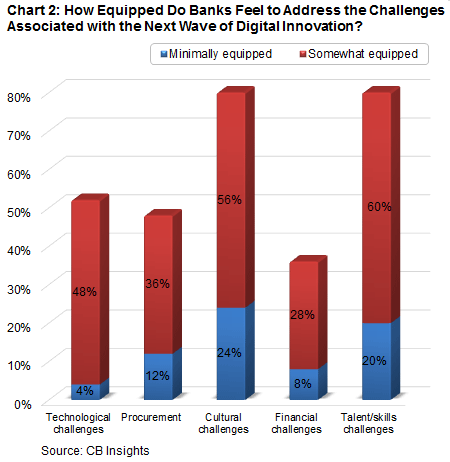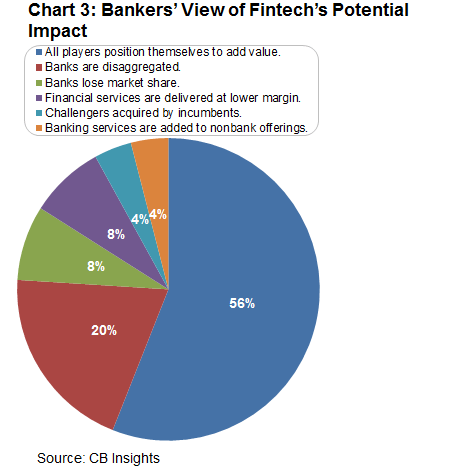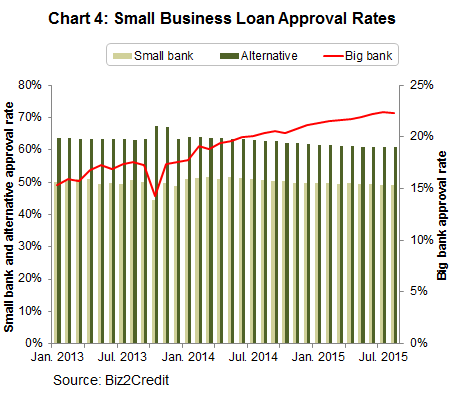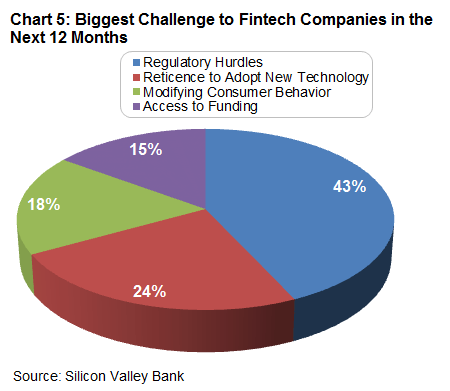As the ways people conduct their banking business multiply, new players known as fintech companies have arrived on the scene in ever-increasing numbers. Financial institutions have increased their diligence to ensure that the innovation they offer is tempered by reliability and security. "ViewPoint" looks at the issues surrounding an evolving question.

Since the advent of smartphones, new technologies driving banking innovations have exploded, which present not only a variety of opportunities but also some impending risks. Among those opportunities for banks is the ability to become more efficient and at the same time develop new revenue streams. It's important to note that many of the fintech companies, as they have become known, that are helping drive this innovation are not likely to become competitors of banks. They hope to correct a variety of financial industry issues to make the banking system operate more efficiently. They offer users advantages including predictive modeling, faster payments, and cybersecurity.
However, tension is slowly creeping into the banking world as fintech firms increase their foothold in a more important part of the financial industry sector. In fact, according to one survey of current banking challenges, aside from the usual concerns about regulations, banks see competition from fintech firms as the biggest threat facing the banking industry today. These firms are placing increasing pressure on bank business models that require adherence to consumer compliance regulations. Banks are increasingly looking at how to best take advantage of new innovations while maintaining their perception of reliability in customers' eyes.
What is fintech?
Currently an estimated 8,000 companies in the United States alone are defined as fintech companies. When discussing fintech companies, it is important to remember how broad the definition is. Originally, the term was applied to firms that introduced new software that was seen as disruptive to the traditional financial sector. When individuals use the term fintech today, they are still using the term to convey the concept of innovation. However, during the past few years, the term has broadened to generally mean companies that develop software used in providing financial services. Thus, there is a wide spectrum of companies that fit into the fintech definition. It has grown to include companies that could be considered competitors, including crowdfunding (such as Kickstarter or GoFundMe), peer-to-peer lenders (SoFi), and payments (Square). Furthermore, it includes companies such as data collection, credit scoring, and cybersecurity that could assist banks in improving their productivity (download chart 1). Fintech also applies to companies like FIS, First Data, and Fiserv, which have had longstanding relationships with banks. Therefore, these long-term vendors have increasingly been put into the same category as new start-ups. Given how broad the definition has become, it's easier to discuss this sector in terms of whether it's an ally or rival to the banking industry.
The case for an ally
Fintech companies act as strategic allies to the banking industry in several ways. Many banks have had long relationships with a few large firms that now fall into the fintech definition. For example, traditional providers have provided core systems to banks for years. Such companies continue to have strong relationships with banks and are now providing new software solutions to help them adapt to the changing technological environment. In addition to these longstanding vendors, new fintech companies are beginning to enter the market looking to further aid in transforming the banking industry. Using these new fintech companies as technology vendors may be the best way for banks that do not have the resources to compete with larger banks or other fintech companies in adopting new technology (see chart 2). Several banks have announced strategic partnerships with a variety of fintech companies, one of which will provide automated bill payment solutions, effectively replacing paper-based billing with fully digitized options.

Fintech firms can assist banks in enhancing many of their back-office operations, including account openings and customer security. Fintech companies are developing software solutions to assist with identifying fraud, such as better mobile device identification and call center interactions analysis. One fintech company, BioCatch, is analyzing account access data from bank customers to help identify patterns and build a customer profile. According to the company, "it proactively collects and analyzes more than 500 behavioral, cognitive, and physiological parameters to generate a customer profile." Once a profile has been created, BioCatch uses the profile to verify subsequent logins. The goal is to better authenticate customers when customers interact with the bank. Another example—Apple's Touch ID—is helping financial applications incorporate biometric identifiers into their security protocols. In addition, some of the newer fintech companies are developing software products aimed at helping banks generate more revenue based on the data that they already collect on customers.
Banks have a vast amount of customer financial data. Therefore, firms are focused on developing predictive analytics software that takes data on customer interactions and produces real-time recommendations for additional customer product offerings. This approach is similar to the ad technology used on many websites that targets specific products to an individual based on their browsing history. But this technology aims to go even farther by being able to predict when credit will be needed or when overdrafts might occur based on a customer's historical patterns. Basically, the idea takes the concept of cross-selling financial products to another, more effective level.
While many fintech companies are providing software to make operations more efficient, banks are also looking at more front- end partnerships, such as making loans to customers. Mobile banking is especially critical, given that it surpassed branch and online interactions with customers. One Sixth District bank is already experimenting with this kind of arrangement; it recently developed a partnership with the fintech startup. As part of the agreement, the bank will offer loan products to the fintech startup's online customer base. Early reports suggest that customers would be able to complete a loan application in less than ten minutes, with such loans generally getting funded in no more than three days. The hope is that such a partnership will yield beneficial results to banks, the fintech companies, and the customers with which they work.
The case for wariness of risks
The Federal Reserve's SR Letter 13-19, "Guidance on Managing Outsourcing Risk," discusses several risks associated with using vendors, including fintech companies. Key risks include operations, compliance, and reputation. Any sort of involvement with fintech firms brings increased risk for banks. With data breaches, website attacks, and wire-transfer fraud schemes becoming more commonplace, cybersecurity has become a top concern for both bankers and regulators. Banks will need to become more sensitive to safeguarding any systems containing customer data that their digital vendors have access to, given the fact that hackers are getting increasingly sophisticated at breaking those systems down.
The risk of a data breach heightens a bank's reputational risk. A bank's reliance on third-party vendors may increase compliance risk, which becomes an additional concern when fintech companies fail to understand applicable consumer laws. Banks need to understand new software products and enhancements in order to determine if additional disclosures are needed and properly incorporated under consumer laws. Operational risks increase if the vendor's technology fails and results in data security deficiencies. To reduce the overall level of risk exposure, it is important that banks develop a comprehensive risk management program that incorporates appropriate risk assessments when using technologically forward vendors.
Strong governing policies regarding the use of fintech companies—or any other vendor—need to be established and approved by the bank's board of directors. Banks will also need to have both adequate due-diligence processes and vendor-monitoring procedures to ensure that these new start-up companies have effective controls in place to protect the bank. Key risk management functions should be appropriately scaled to the amount of risk associated with the activity. For example, riskier activities should receive a higher level of review and monitoring.
The case for a perceived rivalry
Although some fintech companies can be seen as potential allies, many more are still seen as rivals to banks (see chart 3). Customers are finding that these companies typically offer an easier transactional process. Fintech companies like PayPal are offering technology-based services (payments and loans) that dramatically reduce overall friction and difficulty in the transactional process, the type of service highly desired by customers, especially younger ones. For example, millennials prefer to use alternative solutions that increase speed and reduce burden. Customers want better mobile deposit capabilities, person-to-person payments, and bill payment experiences—areas where fintech companies currently are perceived to have a competitive edge. At the same time, technology vendors such as Apple and Google are emerging as potential allies as well as rivals for banks to broaden their digital products for serving today's customer.

In fact, Apple iPay has received a lot of support from banks that are participating in the program. In this partnership, banks give up swipe fees in order to be a part of Apple's mobile wallet. Brian Merritt and Ryan Hildebrand have pushed further into the banking space by launching SEED. The founders previously worked for Simple, a retail banking startup purchased by BBVA in 2014. The new startup is intended to provide business customers with a customizable interface that allows them to develop their own tools and services. Business owners have to open an account with SEED's "bank" so they can use the bank's API to build their own banking experience. Currently, participation with this institution is by invitation only.
From a lending perspective, fintech companies have focused primarily on small business and consumer loans. For example, the student-lending platform CommonBond was financed by a former Citigroup executive. Fintech lenders can approve loans much faster through their digital platforms. This digital lending process is built on data-driven, automated underwriting processes that ultimately enable a more efficient loan-approval process. Furthermore, fintech lenders continue to use start-up capital to invest in advanced technology to simplify the overall lending process. In fact, Biz2Credit estimates that nonbank lenders approve roughly 60 percent of loan applications on the commercial side, which has led to significant growth in a short period (see chart 4). For example, Funding Circle originated $800 million in loans in 2014, which is around the size of a community bank's portfolio. In 2015 Funding Circle forecast that its originations would reach $1 billion for the year. One of Funding Circle's competitors, Kabbage, also announced that it had reached $1 billion in new originations in 2015.

However, the question of the true level of market penetration persists. According to Pepperdine's second-quarter 2015 Private Capital Access Index, only 3 percent of small business owners have indicated that they are using nontraditional lenders as a primary source of credit.
Leveling the playing field
As fintech companies continue to become greater rivals to banks, they will receive increased scrutiny. Some industry experts believe that increased oversight of these firms is only a matter of time. A small group of customers is already pointing out some large drawbacks of fintech lenders, such as their higher costs and lack of transparency about effective rates. A new consultative paper by the Committee on Payments and Market Infrastructures recommends greater checks on fintech companies supplying services to the financial markets. The Federal Trade Commission (FTC) is currently the primary regulator for many of these companies.
A recent whitepaper by the Clearing House, a trade association of the 24 largest banks, discussed the absence of a level regulatory playing field. The paper highlighted the overall lack of consumer regulations, as promulgated by the banking agencies, applicable to fintech firms, who often leave their customers more vulnerable than a typical bank would. For example, in terms of cybersecurity, bankers believe that their fintech competitors are not being held to the same high standards as banks. Fintech companies will only face punishment for their data security practices if an actual data breach occurs and is somehow discovered. Unlike banks, these companies are not subject to same level of scrutiny from regulators through routine examinations and enforcement actions. The Clearing House outlined a number of regulatory reforms that would bring fintech companies more in line with banking industry standards, including more uniform compliance with existing rules under the Gramm-Leach-Bliley Act (GLBA), which require financial institutions to secure customer records and information. Fintech companies typically require customers to provide sensitive personal data similar to what a bank requires, yet they don't offer consumer safeguards comparable to a bank.
Furthermore, the paper suggests that the FTC should develop enhanced GLBA rules in addition to greater oversight by the CFPB, including conducting examinations of fintech lenders. Many fintech companies are starting to realize that greater regulation is coming their way (see chart 5). In fact, according to a November 2015 survey conducted by Silicon Valley Bank, nearly half of all respondents indicated that additional regulation will be the biggest impediment to fintech growth over the coming year. With most industry participants recognizing that some type of regulation is necessary, the question remains: what oversight is appropriate, and what impact will it have on innovation?

Fintech's next steps
Regarding whether fintech companies are allies or rivals to the banking industry, they are likely to be both—at least for the next few years. However, fintech companies will probably form greater, long-term strategic alliances in the future as they struggle to maintain profitability. As evidence, two pioneer online lenders, Kabbage and SoFi, recently raised a significant amount of new capital from multiple international banks. As many community banks can attest, banking ultimately requires a certain scale, level of service, and regulatory focus to remain competitive. Banks need to continue to adapt to an ever-changing environment. Luckily, several banks are starting to experiment, and fintech allies appear ready to help with their experimentation.



